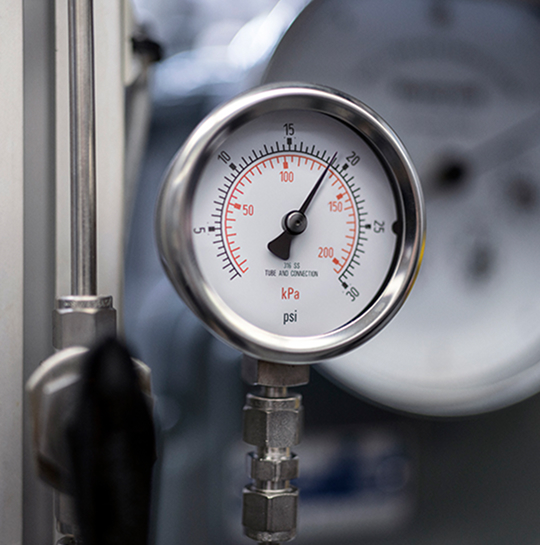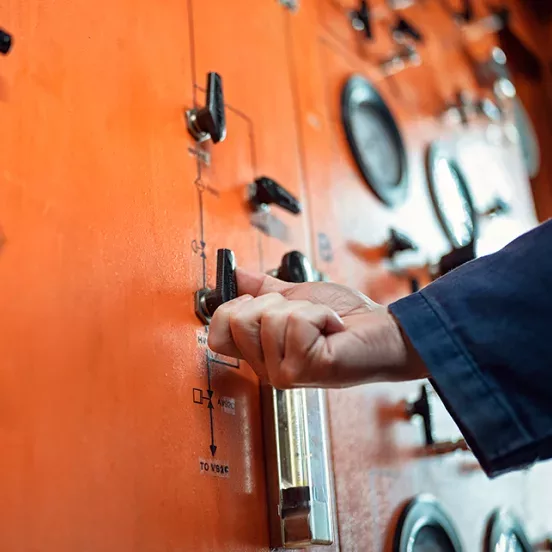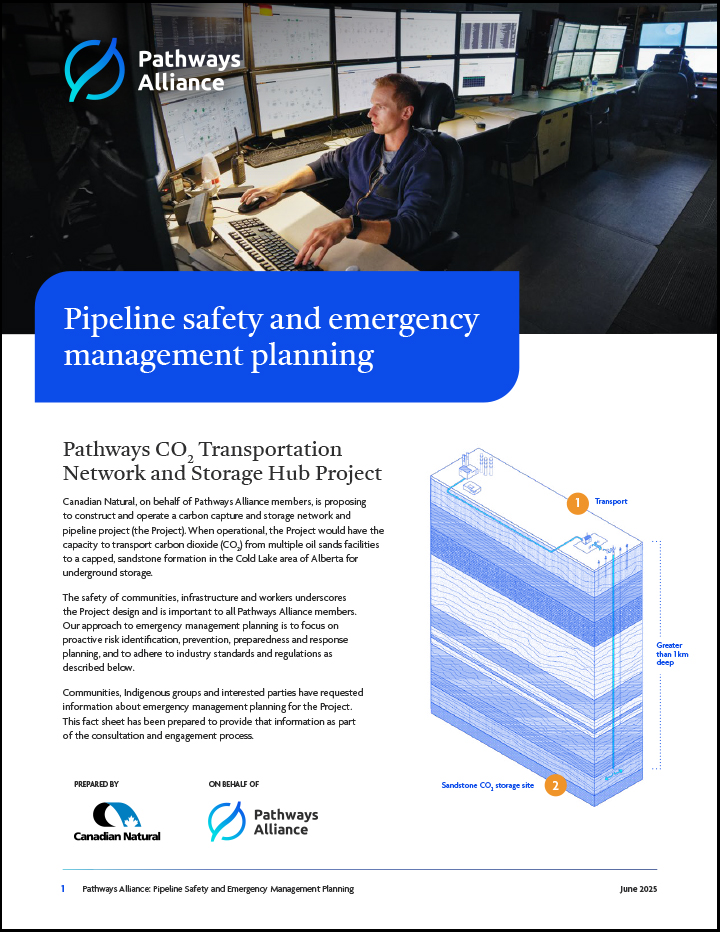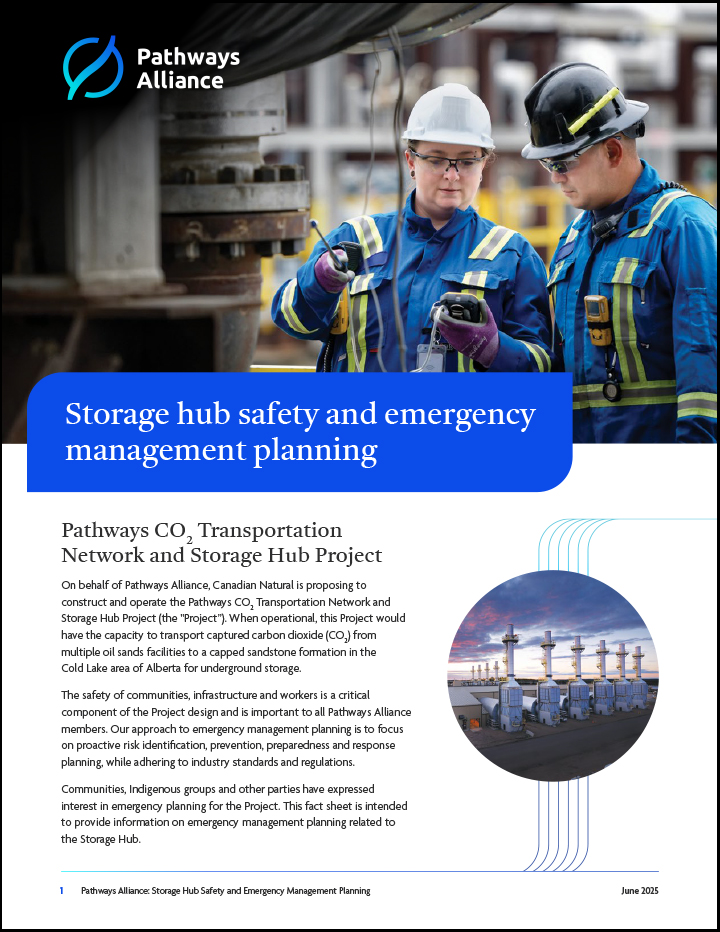Project safety
Carbon dioxide (CO2) capture, transportation and storage projects are safely operating around the world, including here in Canada. Alberta in particular has experience and expertise in the safe construction and operation of large-scale projects. Across Pathways Alliance members’ operations, safety of community, workers and infrastructure is incorporated into our operations and planning processes.
A multi-layered safety system
The proposed Pathways CO2 Transportation Network and Storage Hub Project (the Project) will have a multi-layered risk management system based on decades of technical experience and scientific research. The approach to emergency management planning is to focus on proactive risk identification, prevention, preparedness and response planning, while adhering to industry standards and regulations.
The system will be designed to prevent, detect and respond to conditions outside of maximum and minimum operational parameters.
Throughout the life of the Project, the Storage Hub will be monitored through a site-specific Monitoring, Measurement and Verification (MMV) Plan developed in accordance with the Alberta Energy Regulator’s (AER) Directive 065. The Project proceeding is contingent upon obtaining sufficient fiscal and policy supports and regulatory approvals.
When transporting and storing CO2, engineers and geologists must consider and plan for various safety scenarios. This process begins at the planning stage and continues throughout the full life of a project.
Prevention
The first layer of the safety system is identifying and mitigating risks. Risk management begins at the design stage and continues through all phases of the Project. Engineers and other experts must build multiple safety measures into these plans.

Monitoring
The second layer in the system is the comprehensive, continuous and consistent monitoring of the pipeline and underground formations to detect changes in activity. The proposed CO2 Transportation Network and Storage Hub Project will have multiple monitoring points. Monitoring instrumentation will be placed in the pipeline, at the CO2 injection wells and into underground formations. Unusual activity will trigger a response.


Response planning
The final layer of the safety system is response planning in the unlikely event an incident occurs. Detailed response plans are required and regulated by the AER and set out actions to mitigate the effects of an incident. If pipeline monitoring systems sense changes in pressure, they trigger an automated response. Valves turn off the affected section of pipe and stop the flow of CO2 while alerting a 24/7 control centre.
Emergency preparedness plans are developed in accordance with provincial regulations. Plans are submitted to regulators for approval and are tested through mock exercises with local and regional participation, including regulators.
Frequently asked questions
Pipeline safety and emergency
management planning
June 2025
Learn about pipeline safety and emergency preparedness for the Pathways CO2 Transportation Network and Storage Hub Project.

Storage hub safety and emergency management planning
June 2025
Learn about safety measures and emergency management planning for the Pathways CO2 Transportation Network and Storage Hub Project.

The Project proceeding is contingent upon obtaining sufficient fiscal and policy supports and regulatory approval.